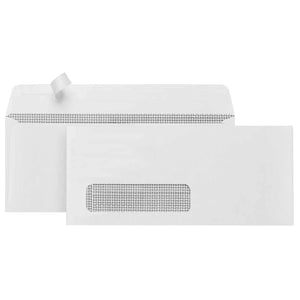Memory is a critical brain function that’s extremely essential in our personal and professional lives. But do you know the difference between the multiple types of memory your brain employs and how to utilize these memory functions effectively?
In this post, we’ll break down the four common types of memory we use inside and outside of the workplace, including sensory, short, working, and long-term memory, as well as further breakdowns of episodic vs. semantic memory, which are specific types of long-term memory.
The 4 Main Memory Types
Our memory gives us the ability to store information and retrieve it later when we need it. While researchers have long debated how to separate the different types of memory, they generally agree on four main types:
- Sensory memory
- Short-term memory
- Working memory
- Long-term memory
Some of these types can be broken down even further, which we’ll discuss later in this article.

1. Sensory Memory
Sensory memory is how our mind understands our environment using our five senses: sight, sound, touch, smell, and taste. It’s a relatively automatic form of memory, which generally holds on to information for brief periods.
Because sensory memory is how we understand the world around us, it’s incredibly important in everyday life, both in and out of the office. When we are busy at work, it’s easy not to notice the sensory input around us. Focus on your sensory memory by taking a moment to notice what you sense around you. How is the lighting? What does your lunch smell like? How do the keys feel under your fingertips? What sounds do you hear nearby or in the distance? Intentionally noticing and acknowledging your sensory memory will help to keep it sharp.

2. Short-Term Memory
Short-term memory allows the mind to remember information for a short period of time, which researchers estimate is about 30 seconds.
There is a limited capacity to the amount of information you can keep in your short-term memory at one time. Some researchers believe you can only remember about seven things at once in your short-term memory (give or take a few).
Short-term memory is useful for recalling anything quickly, such as the name of someone you just met, a phone number, or an address. It’s used in the office all the time. For example, when reading an email and recalling what it said while drafting a response.
💡 Why Are Names Important? The Power of Remembering Someone’s Name.
To improve this type of memory, repeat information so that you can commit it to your short-term memory for a longer period of time. For example, you may repeat the string of numbers in a phone number out loud or in your mind until you have a chance to write it down.

3. Working Memory
Working memory is a form of short-term memory. It allows us to store a small amount of information so that the information is readily accessible and easy to use. Sometimes the two terms are used interchangeably, but working memory specifically refers to using the information stored in your short-term memory.
You can think of working memory as a temporary Post-it note. You store the information temporarily on the note, referring to it when you need to use the information, and then you throw it away when you’re done.
Your working memory capacity is also limited, but it’s critical in allowing us to make plans, comprehend, reason and problem solve, and learn new things. Working memory tasks in the office might include remembering the date and time of a meeting that you then put into your calendar.
Organizing and summarizing information are techniques to reduce the load of information stored in your working memory. For example, if you are reading a lengthy report, you might summarize the report into sections or write down section headings to structure the information and reduce the number of ideas you need to store in your working memory.

4. Long-Term Memory
Long-term memory includes anything we remember after 30 seconds; it takes up the majority of our memory. For example, it’s how we recognize our friends, family, and colleagues, the time of our upcoming meetings, and how to perform our various functions at work.
Long-term memory can be further divided into implicit memory and explicit memory.
Implicit Memory
Implicit memories are those that are not deliberately recalled—those things that unconsciously come back to our minds. For example, if you know how to type, you don’t need to think about where each key is when you spell out a word. You have committed how to type to your implicit memory, and how to do it comes automatically to mind when your hands are on a keyboard. It’s just like riding a bike!
Implicit memories are beneficial because they mean you don’t have to relearn a skill every time you need to use it.
Explicit Memory
Information that you must consciously try to recall is part of your explicit memory. When you take a test and must examine your knowledge to think of an answer, that is your explicit memory at work. In the office, you may use it to remember how to perform a difficult task or to recall items on your daily to-do list.
Explicit memory can be further divided into episodic and semantic memory.
Episodic memory is best defined as the complex and detailed information we store about specific events or episodes in our lives. Examples of episodic memory include how you met your spouse, the details of how they looked, where you were when you met, what was said, and so on. In an office scenario, you might prepare for an upcoming meeting by remembering the events of the last meeting, such as the topics discussed, where the meeting was held, how you felt, and who was in attendance.
Semantic memory focuses on general knowledge and facts. These memories are generally simple and don’t describe an event. Examples of semantic memory include computer passwords, the date of your weekly meeting, and the address of your office.
When comparing semantic vs. episodic memory, remember that episodic memory is more of a description of an event, while semantic memory is a piece of information that may be found within an event. For example, the sequence of topics discussed at a meeting is part of episodic memory, while the date of the meeting is part of semantic memory.
How to Improve Your Memory

Clear Up Memory Space Where You Can
To make space in your brain for important information, you can utilize calendars, reminders, and planning tools to outsource information outside of your brain. Checklists can help you automate your routine tasks. Brain dump lists can help you remember the information that pops into your mind when you are trying to focus on something else.
Utilize both physical and digital tools. Examples of physical tools include calendars, planners, or bullet journals, and examples of digital tools include reminder apps, habit trackers, and management software.
The simple act of journaling can help clear your mind, leaving more space for other information. If you’ve had a bad day or have a lot on your mind, take your thoughts to the page and let it all out.

Prioritize Your Sleep
Sleep is vital for keeping your brain clear. Over the course of the day, your brain becomes filled with new information, and when you sleep at night, it cleans away the less relevant information to make accessing important information more efficient.
Science suggests naps can be a secret weapon in clearing up brain space, helping you work more efficiently. A ten to twenty minute nap allows the brain to prune away unused information. This is why you often wake up feeling refreshed and clear-headed after a nap.
💡 Learn about the negative effects of sleep deprivation, how lack of sleep affects job performance, and how to build healthy sleep habits: How Lack of Sleep Affects Work Performance.

Take Care of Your Body and Mind
The good news is there are many things you can do to keep both your body and mind healthy. Simple healthy habits, such as exercising regularly, getting enough sleep, and eating the right foods, will improve your memory, or, at the very least, help you keep your current memory function strong.
Researchers have also established a strong connection between the heart and the brain. Risk factors that are bad for your heart are also bad for your brain, such as high blood pressure, smoking, and lack of physical activity. Incorporating aerobic exercise into your daily routine is thought to be one of the best ways to improve brain health, in addition to lowering the risk of hypertension and diabetes, helping control weight, and improving your mood and sleep.
More From Blue Summit Supplies
💡 Soft Skill vs. Hard Skill: Benefits of Each and How to Acquire Them
💡 How to Have Empathy at Work and Why It’s a Skill Worth Fostering
Are you passionate about making your company a sought-after place to work? Read our office blog for the latest wellness strategies, industry trends, team building ideas, and more.
If you have any questions or want to talk to someone at Blue Summit, leave a comment below or connect with us on Twitter, Facebook, or Instagram.









